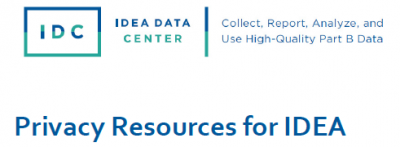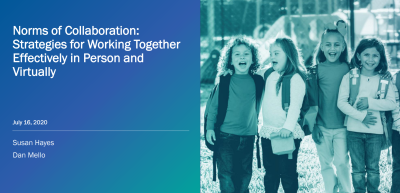Site Search
Results 78 - 84 of 325
-
News Type: Announcements, Blog Post
Telling a Story: Using Data Visualizations for IDEA Public ReportingWhy is public reporting of Individuals with Disabilities Education Act (IDEA) data important for your state? Public reporting of your state’s data shows that the state is providing services required under IDEA law. It also helps provide your state’s...
-
News Type: Announcements
Data Sources for Calculating Significant DisproportionalityThe Data Sources for Calculating Significant Disproportionality provides a summary of the data states need to calculate significant disproportionality in the areas of identification, placement, and discipline. For each category of analysis within...
-
News Type: Announcements, Blog Post
Planning for the Future: Implications of Child Count File Changes on ReportingIt’s important for states to collect Child Count data for children with disabilities not only for meeting federal reporting requirements, but also for learning about the enrollment, educational environments, disability categories, and general...
-
News Type: Announcements
New COVID-19 Q&A Documents Now AvailableThe Office of Special Education and Rehabilitative Services’ Office of Special Education Programs (OSEP) released a Q&A document, Questions and Answers on IDEA Part B Provision of Services , in response to inquiries concerning implementation of the...
-
Norms of Collaboration: Strategies for Working Together Effectively in Person and Virtually
Following the norms of collaboration for working in groups can help groups accomplish their goals more effectively. Attending to the norms of collaboration takes on even greater importance as, more than ever, group members are working together in virtual environments. Norms of collaboration include behaviors such as pausing, paraphrasing, putting inquiry at the center, probing for specificity, putting ideas on the table, paying attention to self and others and presuming positive intentions. This IDC professional development experience helped attendees learn more about the norms of collaboration; how they can contribute to positive, productive group dynamics; and ways to apply the norms when working both in-person and virtually with others.
Format: Quick Reference
Privacy Resources for IDEAThis tool provides a list of privacy resources for IDEA.
Format: Applications and Spreadsheets
Data Sources for Calculating Significant DisproportionalityData Sources for Calculating Significant Disproportionality provides a summary of the data needed to calculate significant disproportionality for identification, placement, and discipline. For each category of analysis, this resource provides a description of the data needed to calculate the risk numerator and risk denominator, and notes the relevant EDFacts file specifications, including which subtotals or category sets, as appropriate.







